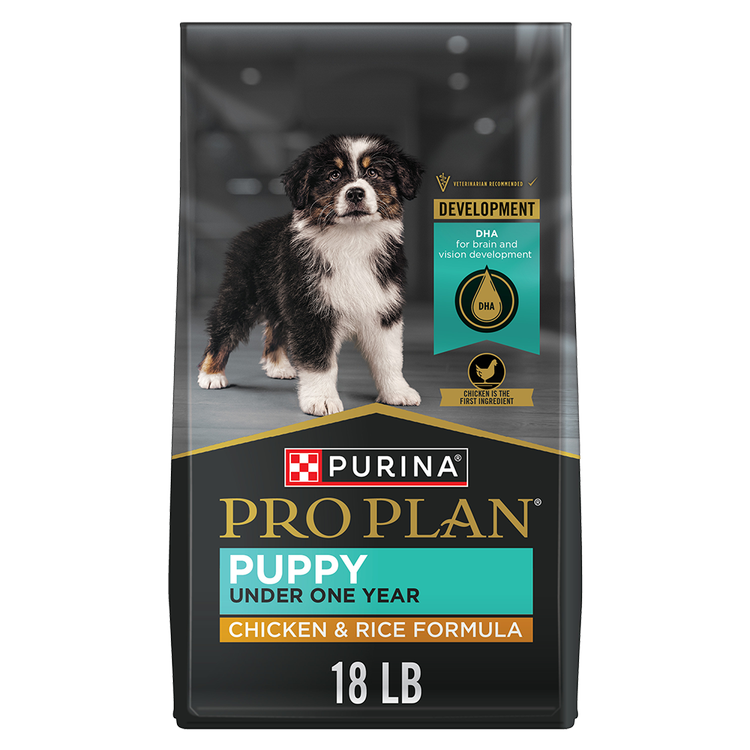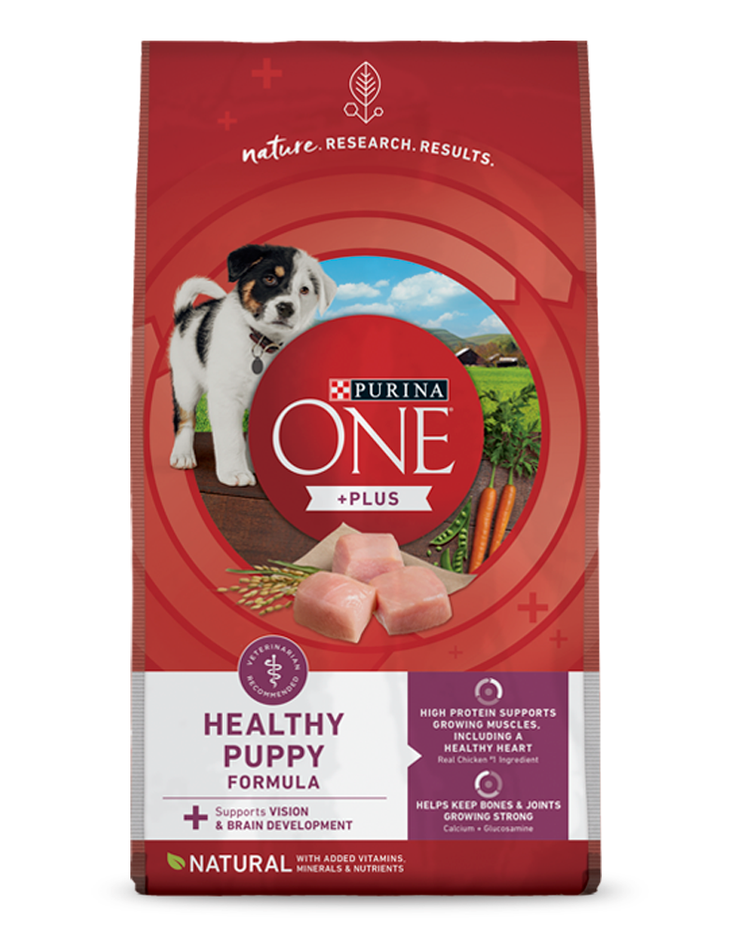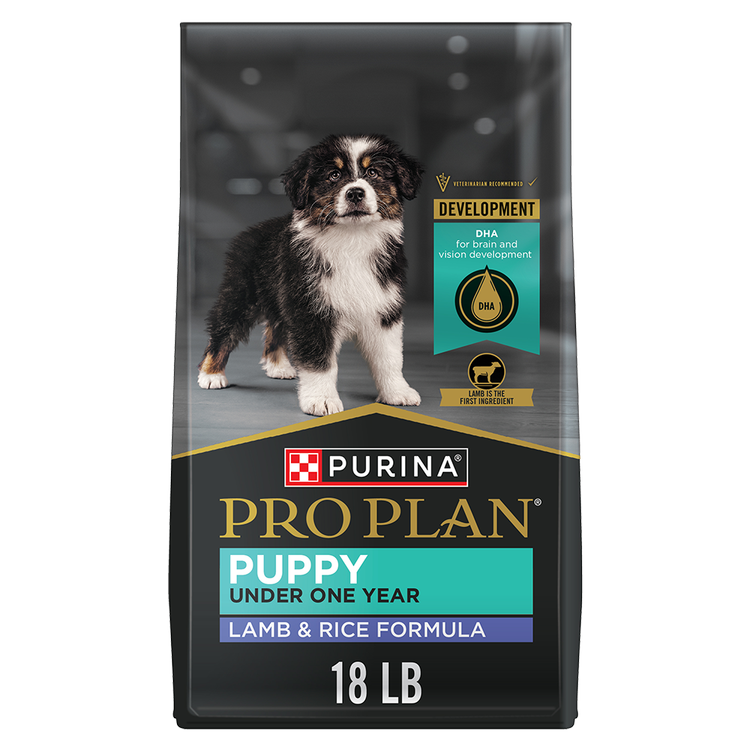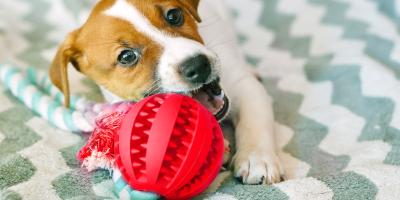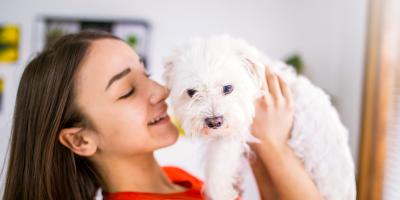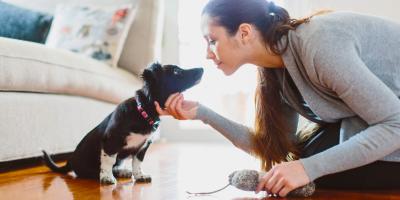Puppy Socialization: When & How to Socialize a Puppy

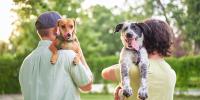
We want the best for our family, and that includes our furry loved ones as well. We want to watch them as they make new friends and thrive in their social life. We might even want to throw them surprise birthday parties or take them to other events where we know people and animals will fall in love with them the way we already have. However, to achieve this we must make sure that we start socializing our pups at the youngest age possible.
Why is it Important to Socialize a Puppy?
We want our puppies to not only be able to establish deep bonds and meaningful relationships with other animals and humans, but to also walk through our world with confidence and less fear. It is normal for puppies and animals to be afraid of new stimuli and things, however, since everything is new to a newly born pup, it is best to start decreasing any potential phobias and anxieties right away. Most behaviorial issues with puppies and dogs later in life are due to not socializing puppies when they were young. Therefore, the sooner we teach our puppies socialization skills, the sooner we can set them up to be successful in their behaviors and encounters as they navigate throughout our big, wide world.
Socializing a puppy involves two parts: socialization and habituation. Oftentimes, these two parts get lumped together, however, it is important to separate the two and learn their differences. For puppy socialization, this involves teaching them social skills that you want to instill in them. This includes how they interact with humans and other animals, how they interact with their environment, how they create new relationships, and more. Habituation, on the other hand, is about teaching a puppy that it is alright to ignore things and not fear diverse types of stimuli because not everything is a threat. This includes new people, new animals, fireworks, the vacuum, joggers, cars, loud noises, and more. Most puppy aggression stems from fear, so by preventing these fears early on this will allow them to engage more positively with others and their surroundings. This will also help them feel more secure and at ease when they enter large crowds, unfamiliar places, and different situations.
To break it down, socialization encourages a puppy to engage positively with others and their environment. Habituation encourages a puppy to ignore the mundane and get used to changes they might encounter throughout life. In turn, you end up fostering a happy and healthy pup that becomes loved and well-adjusted everywhere they go.
When to Start Puppy Socialization Training
The best time to begin socializing your pup is 0-16 weeks old. Although socializing a puppy is an ongoing effort, this is the time when a puppy’s brain development is the most malleable and impressionable as their personality begins to set. During this stage of life, a puppy learns how to play, how to interact with humans and other animals, self-discipline skills, bite inhibition, and more. As they continue to grow, they begin to pick up on the boundaries that are expected of them along with behavior that is normal for most dogs. Instilling positive behaviors in your pup during this period will set the foundation for your loved one to succeed in creating positive social interactions throughout their life.
How to Safely Socialize Puppies Before Vaccinations Are Completed
Your veterinarian will want to see your puppy every 2-4 weeks over a 4-5 month period in order to vaccinate your puppy starting at the age of 6 weeks and ending around 16 weeks of age. This also happens to be within the same period as the most crucial age for puppy socialization. That means some socialization training will need to take place before your puppy can get all their vaccinations.
You may wonder, Can puppies meet humans before vaccinations? The answer is yes, but make sure it is with trusted humans who will gently socialize with your puppy, so they do not become overwhelmed. It is also advisable to have people wash their hands before handling the puppies. This way there is a lesser chance of accidentally passing on any outside diseases to your tiny furball.
Unvaccinated puppies that are exposed to various animals and elements can be at a considerable risk of developing canine distemper, adenovirus (hepatitis), parvovirus, more. Therefore, it is crucial to follow socialization techniques that will ensure the safety of your puppy’s overall health.
Here are a few guidelines that you can follow to make sure your puppy is socializing in a safe manner:
- Limit encounters to animals that you know are fully vaccinated
- Allow most of their beginning social interactions to be around their own birth family, such as their mother and siblings
- Only enroll your puppy in classes that require proof of vaccinations
- Let your puppy watch people and other dogs from a safe distance on a blanket, in a play pen, in a pet stroller or some other form of separation
- Clean any surfaces, toys, blankets, collars, leashes, or any other objects that might have been outside or in contact with other animals
- Start with introducing your puppy to a few new humans and animals, then increase their social encounters over time as your puppy’s immune system continues to get stronger and they begin to get properly vaccinated
After your pup receives all their vaccinations, they will be able to do more and have greater interactions without much to worry about regarding their overall health.
How to Socialize a Puppy
Start proper puppy socialization at home and use lots of positive reinforcement. It is important to make sure that you are taking things at the puppy’s pace and not overwhelming them with too much before they have the time to process everything. Try clearing your schedule to spend time with your new pup to help them adapt to their new environment, while fostering an independent spirit in them so that when you are not around, they will not feel as anxious.
If you have other animals at home, introduce them slowly and in a safe space. Never force a new relationship onto your puppy. Instead, maintain a calm demeanor, let them sniff each other and keep their interactions limited at the beginning. This will teach them that they are allowed to revert back to their comfort zone if they begin to feel apprehensive.
Once your puppy feels more acclimated in their home, you can begin introducing them to more objects, people and animals as well as taking them into new environments within the community – both busy places and quiet places. This will help them learn to feel more at ease in various situations when they become an adult.
Puppy Socialization Training & Techniques
When training your puppy, Purina experts agree that consistency and positive reinforcement are the keys. This will help to create many positive associations with the things you want them to love and enjoy throughout life.
There are a lot of ways to establish successful puppy training and socialization. Below are a few tips & techniques to help you while you socialize your pup:
- Use a puppy socialization checklist
- Create a safe environment
- Make sure your pup is comfortable and watch for signs of stress
- Do not throw your puppy into overwhelming or uncontrolled situations
- Let your pup explore at their own pace
- Go for daily walks
- Enroll your pup in puppy classes that require proof of vaccinations
- Provide ongoing positive reinforcement using toys, treats, praise and other things your puppy loves
- Train your puppy in other areas, such as potty training, crate training and more
- Teach your pup that people, animals, new environments, and diverse situations are safe & fun
- Socialize with other people and animals that you know your puppy likes
- Maintain patience
- Never force anything onto your puppy
- Let them return to you for extra support and comfort
Socializing a Puppy Checklist
The purpose of this checklist is to act as a guide in order to create as many positive experiences as possible with various persons, animals, objects and environments. Use lots of treats, food, toys, praise and other forms of positive reinforcement to create good associations around these things.
Start slowly, far away, and at a very low intensity. If your puppy is comfortable, you can approach and increase the intensity. If your puppy starts to exhibit any fear, overarousal, avoidance, or other negative behaviors, take a step back and do something else that they enjoy for a few minutes. Then slowly try to reintroduce your puppy to the item, person, object and environment once more, but at an intensity a bit lower than what startled them initially.
Do not force your puppy into anything that overwhelms them. Slow and steady is the way to go!
Introducing a Puppy to Animals | |
|---|---|
|
|
Introducing a Puppy to People | |
|---|---|
|
|
Introducing a Puppy to Different Surfaces | |
|---|---|
|
|
Introducing a Puppy to Different Noises | |
|---|---|
|
|
Introducing a Puppy to New Spaces & Environments | |
|---|---|
|
|
Introducing a Puppy to Vehicles | |
|---|---|
|
|
Introducing a Puppy to Objects | |
|---|---|
|
|
Introducing a Puppy to Grooming | |
|---|---|
|
|
Introducing a Puppy to Dog Gear | |
|---|---|
| |
Introducing a Puppy to Handling/Touching | |
|---|---|
|
|
You can always add to this checklist, if necessary, but this should get you started towards socializing your pup successfully.
Where to Take a Puppy to Socialize
You might be wondering, Where can I take my puppy to socialize? It is important to help your puppy adjust to many different environments, from crowded and noisy places to quiet places. The following are some examples of where you can take your puppy to help them socialize:
- Parks (Ex: dog parks, children parks, nature parks, etc.)
- Pet-friendly commercial areas (Ex: stores, restaurants, business buildings, etc.)
- Dog-friendly events
- Vet offices
- Unfamiliar neighborhoods
- Near bodies of water (Ex: lakes, ponds, rivers, beaches, etc.)
- Pet groomers
- Pet hotels and boarding
- The car
- Sidewalks and near busy streets
Make sure to discuss this list with your veterinarian first. Various parts of the country have different environmental factors we may want puppies to avoid, such as lakes and rivers or nature centers in areas with a high leptospirosis risk.
Other Tips & Tricks to Socialize a Puppy
Your pup is going to be engaging with a world that is constantly changing. Getting them used to as many new situations will help. Below are some more tips & tricks that will prepare your pup for a better adulthood:
- Get your puppy used to different people. You can do this by changing your appearance with wigs, sunglasses, hats, backpacks, masks, helmets and more. Just make sure your puppy knows it is you, so you do not frighten them.
- Get your puppy used to other people and dogs. From a safe distance, you can take your puppy out and watch other dogs and people go by. You can also create supervised visits with trusted people and children in a quiet and calm manner.
- Introduce your puppy to moving objects, such as bicycles, wheelchairs, the vacuum cleaner, skateboards, etc.
- Play new sounds for your puppy at a low volume first, then gradually increase the volume. You can do this with crinkled paper, music, the hair dryer, the microwave, timers, bubble wrap, open windows and more.
- Get your puppy used to human hands in a gentle and positive way. Every time you touch your puppy, give them a treat. Try to refrain from hugging, grabbing and rough play so that your puppy can view hands as a rewarding experience. Once you get your puppy used to being stroked on the shoulder, neck and back, you can then start working on familiarizing them with being touched on other parts of their body, such as their legs, tail, tummy, feet, and face.
- Encourage your puppy to walk over different surfaces using toys, treats and other engaging ways. Do not force your puppy if they are not interested but encourage them to explore instead. You can do this over different surfaces, such as grass, concrete, mulch, gravel, bubble wrap, cardboard, etc.
- Introduce your pup to different scents, but make sure they can refrain to a safe space if the smell gets overwhelming. A dog’s sense of smell is 10,000 times more than our own, so it is important we remain mindful of this. You can introduce them to smells, such as herbs, spices, food, nontoxic plants, and more.
- Since the car is what will be the primary vehicle used to transport your pup to the vet, dog parks and other places, it is important to make sure you create as many positive associations with the car as possible. Some ways you can do this is by giving your pup some food or treats when they get in the car, sitting in the car with your pup on your lap when the engine is off, having your pup sit in the car where they will be eventually, letting your pup sit in the car with the engine on, going on short drives with your puppy, progressively going on longer drives, going on a walk as a reward after a drive and more.
These will set the foundation to help your puppy feel secure as they navigate through our changing world.
What to Do if My Puppy Isn’t Responding to Socialization Training
Sometimes there is one antisocial puppy that we just do not know what to do with. If this is the case with your loved one, then whatever you do, remain calm and do not force your puppy to do something that they are not comfortable with. If they begin to exhibit stress, stop whatever is causing the stress and shift to an activity that is more relaxing for your pup. You can slowly try to reintroduce them to the person/item/object/etc. later once they feel more relaxed.
Make sure they have a space where they feel safe that they can return to when they start to get overwhelmed. Continue to positively reinforce as many social interactions as possible. Be their safe person that they can return to if they need extra support. If needed, distance yourself and give them space from whatever is causing them anxiety. End all socialization training on a positive note to get them excited for their next session.
Signs that your puppy is stressed and needs to take a step back:
- Backing away
- Tail tucking
- Escaping
- Crouched position
- Fearful to approach
- Growling
- Whining
- Cowering
- Aggressively pulling
Continue to work with your puppy on their socialization training and talk to your vet if you run into any concerns or need further advice.
For more helpful training insights, check out the myPurina app.
For more expert tips on training, explore our other puppy training articles.
For your own personalized dog training plan, download Zigzag, the most advanced dog training app, for free and unlock 1 month of Premium Access with unlimited lessons, tailored guidance, and 24/7 expert support using code PUR30 at payment.
Install Zigzag for free now to get started

Be Rewarded for Your Purina Purchases
Earn and redeem points for Purina products with myPurina app.

